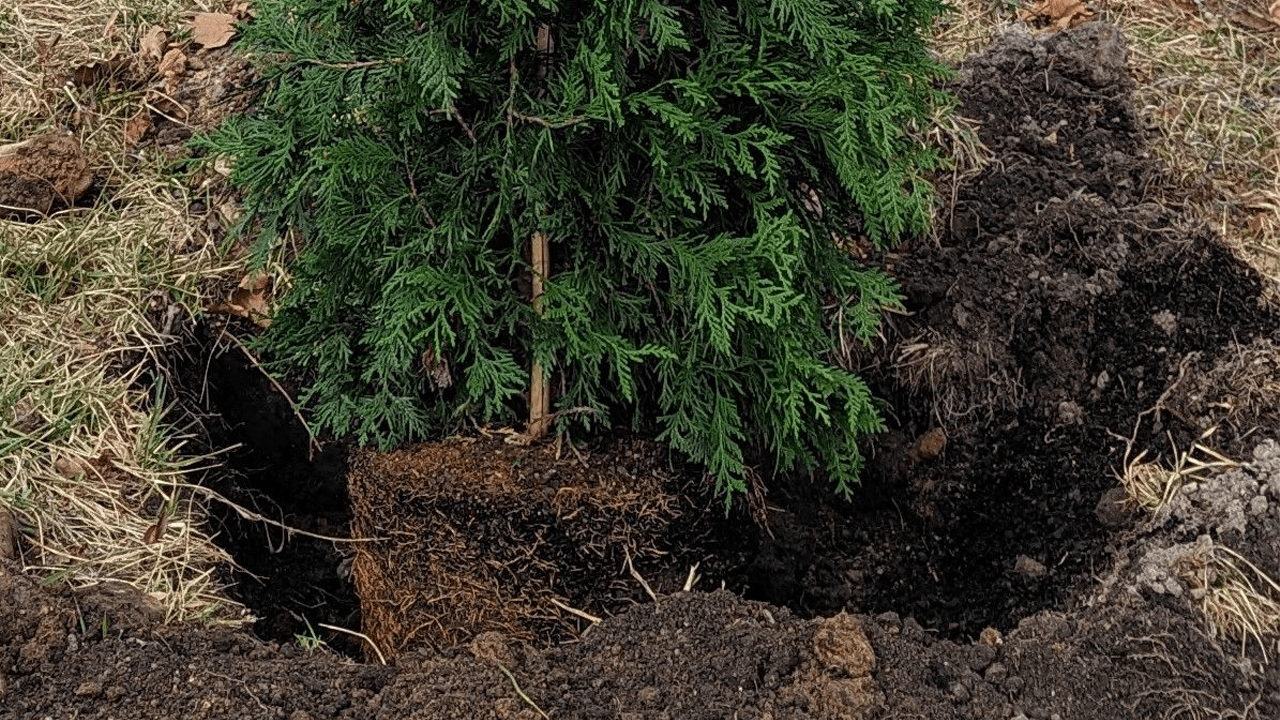Late winter into early spring is the time to transplant and plant trees and shrubs into the landscape. Move small trees bare root before they break bud. The advantage of moving trees while dormant are numerous, including that they require less expertise to transplant, weigh less, and don’t need to be planted in as big of a hole. The downside is that there is a limited window to transplant bare root trees!
A few tips if you decide to plant bare root: keep the roots moist at all times and shade them from direct sunlight. Sunlight is not only drying, but the exposure to UV rays will kill roots. A square of moist burlap works well to cover the roots. Even better is a 5-gallon bucket filled with water. Pre-soak the transplants for 2 to 24 hours. I prefer to soak the trees in a dilute (5 mLs /gallon) solution of soluble kelp. In the interim, dig the holes to plant the trees into. Holes ought to be dug wider than deep – most of the roots that grow radiate outward from the tree, and most are within the top 12” of soil. When setting the tree into the planting hole, plant it no deeper than the depth of its root flare. Prior to backfilling, it is a good idea to install a stake to keep it upright during the initial period of establishment. Use flagging or horticultural tape to tie the stem to the stake support. Maintain the stakes for one growing season. Backfill the soil, firming around the roots to eliminate air voids, which can dry roots. Fill in around the root mass 4” at a time, then firm. Repeat the process until the tree roots are completely planted. Build a well around the tree as far out as the trees drip edge. Then, fill the well with water to the brim. To complete the planting, add a 2” layer of compost, and mulch with woodchips, 4 to 6” deep.
Mail order trees are most often shipped bare root while dormant.
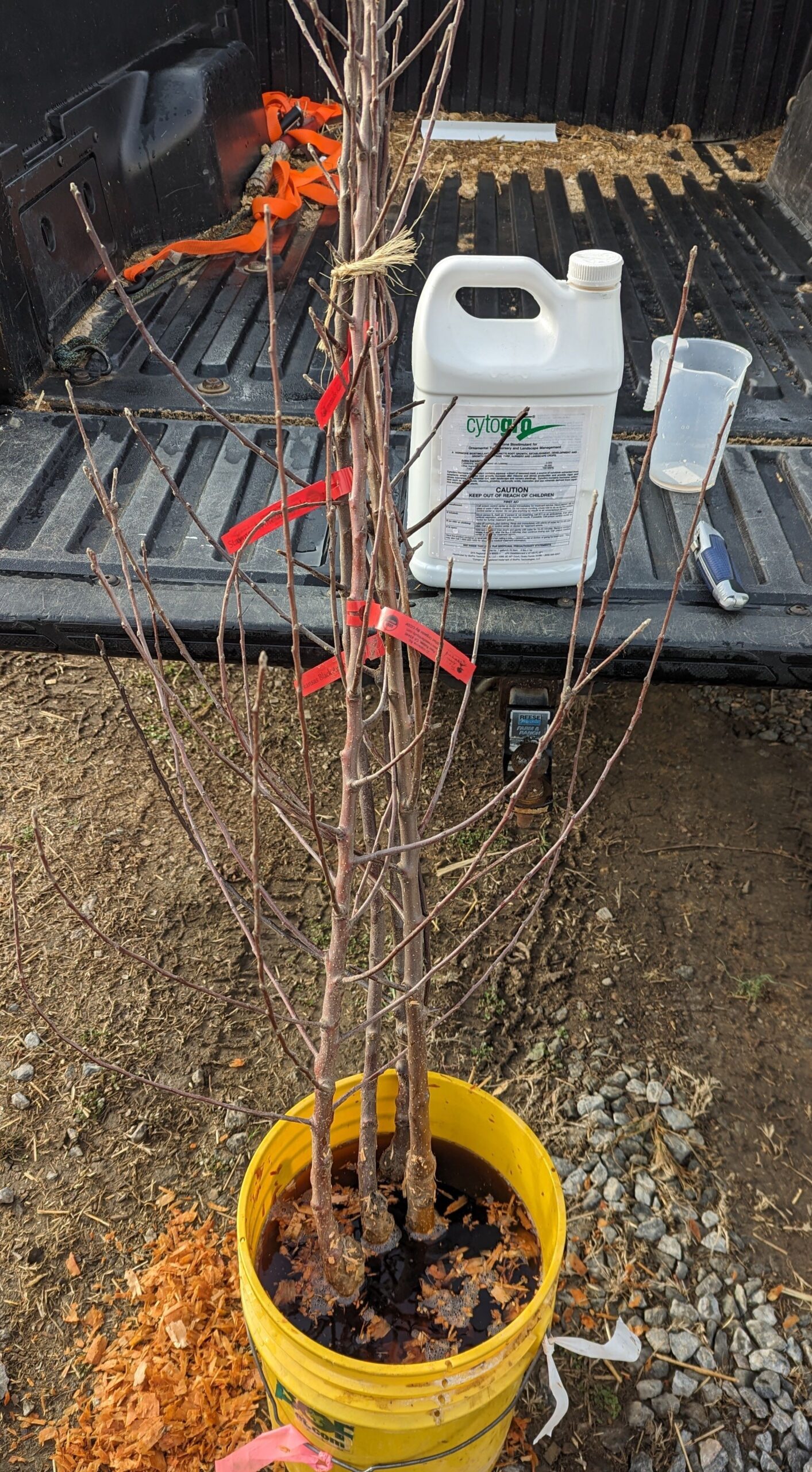
Even if you intend to plant after bud break, trees ought to be dug with a root ball early, prior to spring growth. We dug corkscrew willows last fall and heeled them in mulch to overwinter. Digging, moving, and planting trees during the dormant period increases transplant success. If you purchase a tree from a nursery after it has broken bud, the nursery will tarp the tree when transporting it for delivery. If you decide to take home the tree in your pick-up, be sure to tarp it as well. This will keep the newly flushed leaves from desiccating during transport. Do this for both deciduous and evergreen trees.
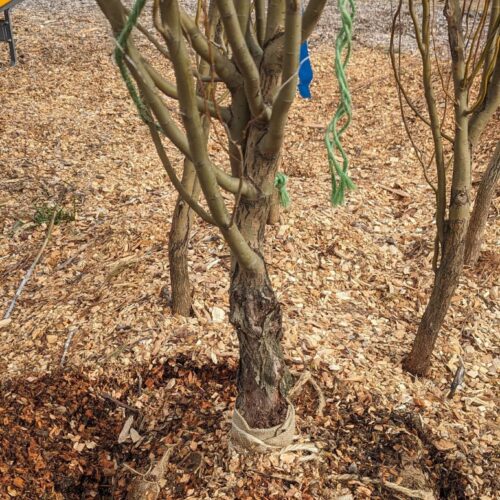
When handling the tree, you can use the stem to steer the tree in the direction you want it to go, but to move it, do so, by rolling the ball. Think of the ball as the re-invention of the wheel. To off load the tree from your pick-up, roll it onto a bale of straw or peat to cushion the impact of the drop. Do not drop the tree off the tailgate of your truck to the ground. Back the truck to the planting hole if you have access by truck, or tip up the tree onto a hand truck to move it to the planting site. Installation of the tree is similar as for bare root planting, taking care not to plant any deeper than the top of the root ball. Once the tree is rolled into the planting hole, and set upright, unwrap the ties and burlap from around the tree collar. Sometimes the trunk flare is buried in the root ball; do not assume that the top of the burlap is the exact depth the tree ought to be planted! Back up and take a look at the tree from one aspect (let’s call it the x-axis), then at 90 degrees (the y-axis) to set the tree upright in the hole. If true, backfill and firm the soil. Make any initial adjustments by handling the root ball and not tugging at the stem. This is important to minimize additional root injury. Once filled, water, top dress with a good compost and mulch with woodchips.
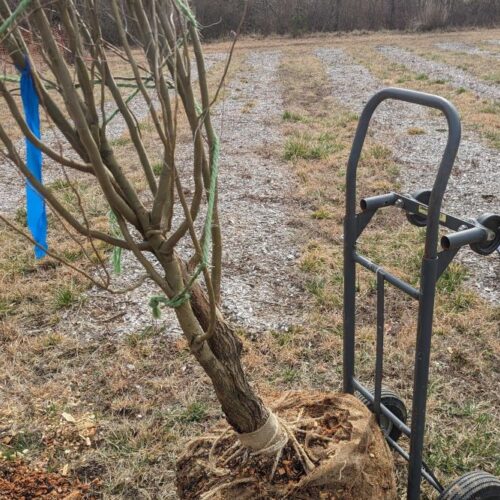
Today many trees are machine dug. This is especially true of trees 2 inches or greater in caliper. They are dropped into a wire basket lined with burlap, then tied off. It is best to remove the wire basket. If the root ball is sandy or fractured, leave it on the tree, and the roots will grow in between the spaces in the basket. In either case, you want to ensure that the root ball remains intact, and doesn’t crumble upon removal of the wire. I will readily admit, it is tricky and requires a bit of experience to deal with basketed trees!
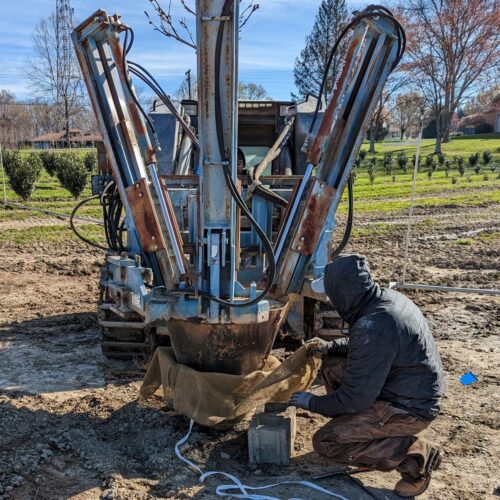
Smaller caliper trees (<2”) are often grown in containers. These smaller trees are easier to plant on account of their smaller size and lower weight. Remove the container by tapping around the lip with a shovel to free the tree. If the roots are circling the root ball, sever them using a spade or pruner in each of the root balls’ four quadrants. The idea is to encourage root establishment outward and away from the original root ball. The greater the area that the roots grow into, the greater its resistance to drought conditions.
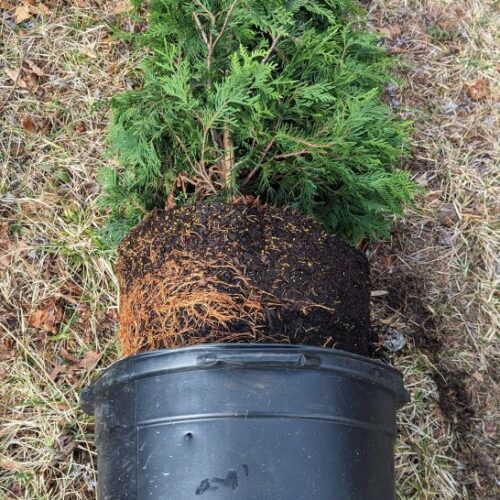
When planting on a slope, the height of the root ball ought to be level with the elevation half way down the slope. The uphill side is backfilled level with the ball; form a saucer with soil on the downhill side to catch water.
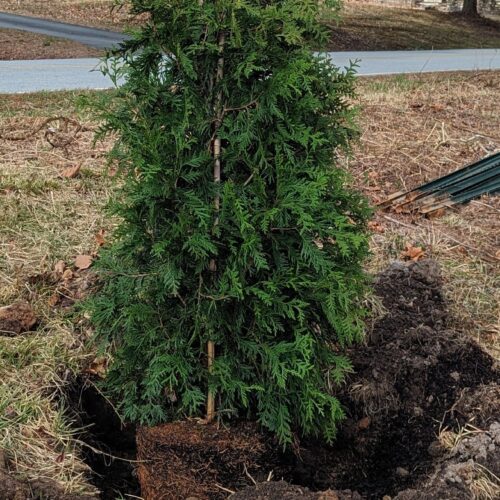
Now that you are familiar with planting details, how do you determine where to best plant your tree? Next time, we’ll discuss shade and evergreen trees and their correct placement in the landscape.
~ Signing off for now, Joe

